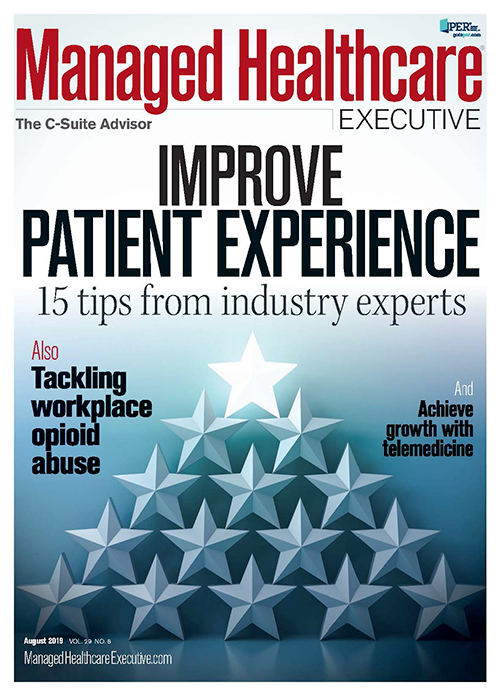Uniting Determinants and Data for Population Health
How can healthcare organizations better overcome the challenges involved with integrating social determinants of health data into their population health initiatives?

More and more, payers and providers are realizing the value of integrating patients’ social determinants of health (SDoH) data into patient care initiatives. With the industry looking toward a value-based care future, it’s becoming clear that finding ways to incorporate what the World Health Organization defines as “the conditions in which people are born, grow, live, work, and age” is vital to improved health outcomes-and a healthy society, in general.
This includes using SDoH data to help guide the development and implementation of successful population health strategies, says Ali H. Mokdad, PhD, chief strategy officer for population health at the University of Washington School of Medicine. He argues that healthcare professionals can develop excellent, evidence-based population health initiatives-but unless a particular population’s SDOHs are considered, such programs will not be as effective as desired.
“A patient’s environment plays a critical role on whether or not they can actively participate in their own health and wellness,” he explains. “If a family is struggling to pay their rent, they are not going to spend money on preventative care. If a family can’t find fresh fruits and vegetables that are affordable in their neighborhood, they won’t eat a healthy diet. If they are in a neighborhood that isn’t so safe, it may be hard for them to be physically active. It is very important that we address all of these aspects early on so we invest in the right kind of population health approaches-and don’t waste time and money with trial and error type programs.”
Related article: Top Barriers to Population Health
Dion Sheidy, a healthcare advisory leader with KMPG, a professional services firm, says that while adding SDoH data into population health initiatives seems like it should be a fairly simple thing to do, it’s much harder than one might expect in practice.
“The biggest challenge to using this information to help deliver care in an appropriate setting and an appropriate way is actually the data itself,” he explains. “Providers may not even collect this kind of information about a patient. If they do, the data exist in lots of different places and are saved in lots of different formats. The ability of any organization to successfully pull that data into a single location to help drive data-driven care is very difficult to do.”
But despite those data challenges, Humana, a leading healthcare payer organization, has made strides in incorporating SDoH into their population health strategies with their Bold Goal initiative, a unique program to help better care for patients with chronic medical conditions. Humana aims to improve the health of the communities they serve by 20% by 2020. Part of that strategy is considering SDoH factors like food insecurity and social isolation in their population health programs.
“We understand that food insecurity, social isolation, transportation security, and housing are all directly related to health,” says Andrew Renda, MD, MPH, associate vice president of population health at Humana. “This program allows us to bring those things into the mainstream of healthcare so we can start treating SDoH for what they are-clinical gaps in care.”
Caraline Coats, MHSA, vice president of Bold Goal and Population Health Strategy, says healthcare has been too medically focused for too long. “Today, as an industry, we only spend 4% of every healthcare dollar on social health. Everyone knows it’s important to health outcomes, particularly the clinicians. But we needed to find a way to provide the data and resources providers needed so they could treat social health factors too.”
It was a challenging undertaking. But Renda said they started by simply standardizing their SDoH data collection.
Related article: 4 Ways Health Plans and Communities Can Address SDOH
“We needed to agree on common definitions and a way to codify those definitions,” he says. “For food insecurity, we decided to use the United States Department of Agriculture (USDA) Vital Signs screener, a two-question survey, and for social isolation and loneliness, we used a three-question scale from the University of California Los Angeles (UCLA) called the Loneliness Scale.”
By using these validated screeners, Humana was able to more effectively incorporate the data into their different well-being and direct clinical platforms. In 2018, the health plan screened 50,000 of their members in San Antonio, markets on these particular social determinants. And, in doing so, they were able to bring that information into their data ecosystems to not only help their providers make appropriate referrals to their patients for different resources, but also to assist Humana in their development of more effective population health programs.
After only a few years, Bold Goal is seeing clinical gains. The integration of SDoH information helped to increase the number of self-reported “healthy days” by Medicare Advantage members in Humana communities by 2.7 days. While 2.7 days might not seem like much, Medicare Advantage beneficiaries in communities who did not participate in the Bold Goal program saw a decrease of 0.6 healthy days for the year. While Coats said Bold Goal program is still in its early stages, she is buoyed by the results so far.
“I firmly believe there is a return on both health and financial investment in social determinants,” she says. “We have incredible qualitative data and feedback from our members. It is going to take time to prove all this out but, with the space and time to prove the importance of social health on the overall quality of life, we will get there.”
Renda agrees. “We see that the program is moving in the right direction with both the healthy days numbers as well as other improvements we’ve seen in physical and mental health in our members,” he says. “We see SDoH as an opportunity for us to get deeper into our communities and understand the unique issues each may face and how we can rally around those to improve overall health. And our results so far give us hope that if we continue this work-and scale things that we are now learning are effective to improving health outcomes-we can have a bigger and bigger impact for our members over time.”
Kayt Sukel is a science and health writer based outside Houston.

This week on Tuning Into The C-Suite Briana Contreras spoke with Dr. Scott Hayworth, president and CEO of New York-based CareMount Medical. In this interview, the two discussed the importance of patients staying in contact with their doctors for the sake of reducing public health risks and to discuss ongoing care options with them.
Listen
Eric Levin talks PBMs and how Scripta is Tackling the Market's Challenges for Patients
July 22nd 2020MHE's Briana Contreras spoke with CEO of Scripta, Eric Levin. The two discussed the current state of the pharmacy benefit market and how the Scripta organization has been assisting its clients and their prescriptions prior to the COVID-19 pandemic and during.
Listen